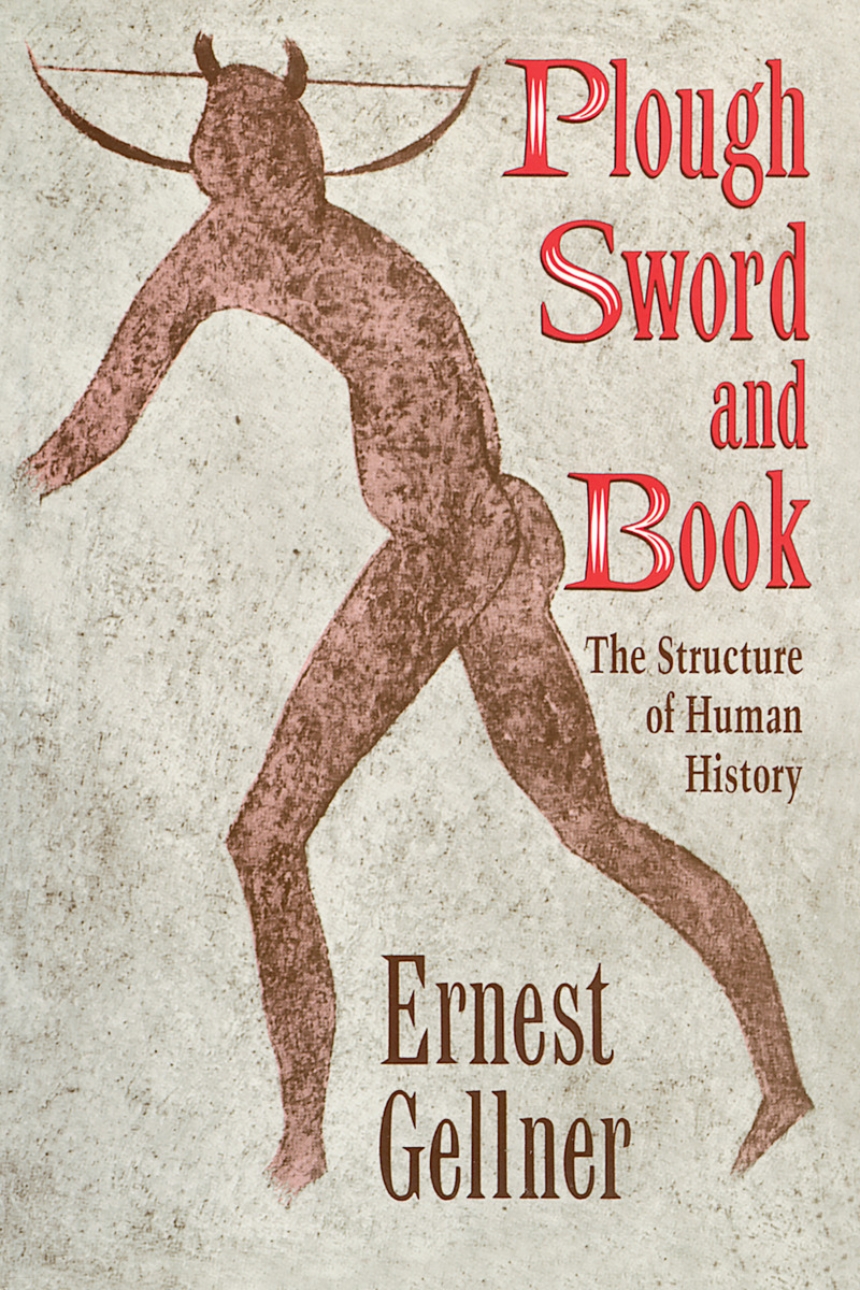Plough, Sword, and Book
The Structure of Human History
"Philosophical anthropology on the grandest scale. . . .Gellner has produced a sharp challenge to his colleagues and a thrilling book for the non-specialist. Deductive history on this scale cannot be proved right or wrong, but this is Gellner writing, incisive, iconoclastic, witty and expert. His scenario compels our attention."—Adam Kuper, New Statesman
"A thoughtful and lively meditation upon probably the greatest transformation in human history, upon the difficult problems it poses and the scant resources it has left us to solve them."—Charles Larmore, New Republic
"A thoughtful and lively meditation upon probably the greatest transformation in human history, upon the difficult problems it poses and the scant resources it has left us to solve them."—Charles Larmore, New Republic
288 pages | 6 x 9 | © 1990
Anthropology: Cultural and Social Anthropology
History: History of Ideas
Philosophy: Philosophy of Society
Table of Contents
1. In the Beginning
The Need for Philosophic History
The Structure of History
Trinitarianisms
Production, Coercion, Cognition
Which Way Will the Stone Age Vote Swing?
The Suspect Witness
2. Community to Society
The Cognitive Evolution of Mankind
Multiple Sensitivities
Generic Types of Strand
Social and Logical Coherence
The Terminus
The Overall Plot
3. The Coming of the Other
Paths of Cognitive Transformation
The Disembodied Word
"Platonism"
The Indirect Route
The First Unification
The Authority of Concepts
Plato’s Sociological Mistakes
4. The Tension
A Divine Order
Church and State and their Separability
Protestantism, Generic and Specific
5. Codification
Reformation to Enlightenment
The Sovreignty of Knowledge
The Dethronement of the Concept
Concept-Implementing and Instrumental Cultures
The Enlightened Solution and its Problems
The Age of Progress, or Operation Bookstrap
6. The Coercive Order and Its Erosion
Patterns of Power
Conditions of the Exit
General Summary
7. Production, Value and Validity
The Economic Transformation
Production and Coercion
The Three Stages of Economy
The Ideological Transition to the Generalized Market
The Re-Entry Problem
The Circularity of Enlightened Reasoning
Objectivity or Not?
8. The New Science
The Concept of Culture and the Limits of Reason
Egalitarianism
What Next?
9. Self-Images
Economic Power (Wealth as Lever)
The New Coercive System
The Two Running-Mates
The Right-Wing Alternative
Acorn or Gate
The New Social Contract
1945 and Some Recent Clauses in the Contract
10. Prospect
The Division of Labour and Back Again
The Future of Production
The Future of Cognition
The Future of Coercion
Summary of Argument
Notes
Index
The Need for Philosophic History
The Structure of History
Trinitarianisms
Production, Coercion, Cognition
Which Way Will the Stone Age Vote Swing?
The Suspect Witness
2. Community to Society
The Cognitive Evolution of Mankind
Multiple Sensitivities
Generic Types of Strand
Social and Logical Coherence
The Terminus
The Overall Plot
3. The Coming of the Other
Paths of Cognitive Transformation
The Disembodied Word
"Platonism"
The Indirect Route
The First Unification
The Authority of Concepts
Plato’s Sociological Mistakes
4. The Tension
A Divine Order
Church and State and their Separability
Protestantism, Generic and Specific
5. Codification
Reformation to Enlightenment
The Sovreignty of Knowledge
The Dethronement of the Concept
Concept-Implementing and Instrumental Cultures
The Enlightened Solution and its Problems
The Age of Progress, or Operation Bookstrap
6. The Coercive Order and Its Erosion
Patterns of Power
Conditions of the Exit
General Summary
7. Production, Value and Validity
The Economic Transformation
Production and Coercion
The Three Stages of Economy
The Ideological Transition to the Generalized Market
The Re-Entry Problem
The Circularity of Enlightened Reasoning
Objectivity or Not?
8. The New Science
The Concept of Culture and the Limits of Reason
Egalitarianism
What Next?
9. Self-Images
Economic Power (Wealth as Lever)
The New Coercive System
The Two Running-Mates
The Right-Wing Alternative
Acorn or Gate
The New Social Contract
1945 and Some Recent Clauses in the Contract
10. Prospect
The Division of Labour and Back Again
The Future of Production
The Future of Cognition
The Future of Coercion
Summary of Argument
Notes
Index
